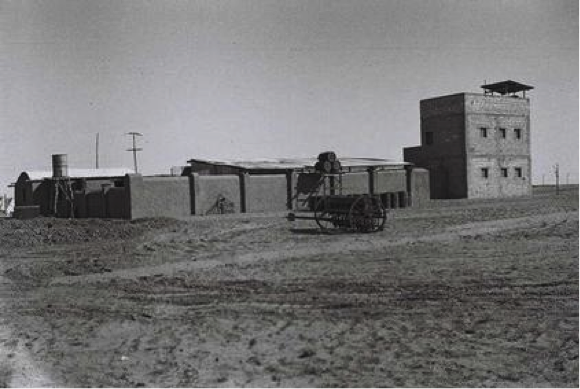
May 12, 1943
Although many early Zionist leaders believed the Negev Desert with its sparse population and inexpensive land could be an area of Jewish settlement, most plans for settling the region were abandoned as priority was given to creating contiguous settlement blocs in the coastal plain and valleys in the north of the country.
In May 1921, two World Zionist Organization leaders, Arthur Ruppin, head of the Palestine Office, and Akiva Yaakov Ettinger, Director of the Agricultural Settlement Department, submitted a memo on the difficulty of settlement in the Negev. In their opinion, the organization lacked the necessary experience for large-scale settlement in the Negev.
In the mid-1930s, settling the Negev became a priority once again. Anticipating the partition of Palestine, Zionist leaders did not want to lose the Negev Desert as part of the future Jewish State. They were particularly eager to maintain access to the Gulf of Aqaba at Palestine’s Southern tip. Beginning in 1939, the Jewish National Fund increased the purchase of land in the Negev, and the settlement department of the Zionist Organization investigated the region’s agricultural potential.
As a result, three agricultural outposts were established in 1943. The first was Mitzpe Gevulot on May 12. It was followed by the creation of Beit Eshel and Revivim. Mitzpe Gevulot had some ten members who lived in tents. These first settlers conducted experiments in grain cultivation and developed systems for irrigation and water conservation.
Jewish settlement of the Negev continued and on October 6, 1946, eleven additional settlements were founded in a single night. By the time of the November 1947 U.N. Partition Plan proposal, twenty-five settlements had been established in the Negev. Most of these settlements were included in the proposed Jewish State.
